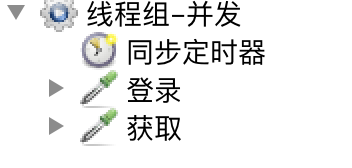- 继承
- 派生类的拷贝构造
- 构造顺序
- 拷贝构造
- 引例1: 当子类,不自实现拷贝构造时,默认调用父类的拷贝构造
- 引例2: 子类自实现拷贝构造,不做特殊处理时,只会调用父类的构造器.
- 引例3: 显示的调用父类的拷贝构造器。
- 案例:
- 内嵌函数的拷贝构造
- 引例1 :当内嵌子对象,子类不自实现拷贝构造时,默认调用内嵌子对象的拷贝构造
- 引例2: 子类自实现的拷贝构造,不做特殊处理,此时只会调用内嵌对象的构造器,此时失去了内嵌对象的拷贝构造的意义
- 引例3: 显示的调用内嵌对象的拷贝构造器
- 案例:
继承
派生类的拷贝构造
拷贝构造,也是一种构造函数,也没有被继承下来。
语法:
派生类::派生类(const 派生类& another):基类(another),派生类新成员(another.新成员)
{//派生类新成员(another.新成员)
}
构造顺序

父类中,一部分成员需要拷贝构造来完成,
子类中,也有一部成员需要拷贝构造来完成。
子类中的内嵌子对象也需要拷贝构造来完成
拷贝构造
引例1: 当子类,不自实现拷贝构造时,默认调用父类的拷贝构造
#include <iostream>
using namespace std;//当子类,不自实现拷贝构造时,默认调用父类的拷贝构造
class A{public:A(){cout << " A ()" << endl;}A(const A& other){cout << " A (const A& other)" << endl;}};class B: public A{
public:B(){cout << " B ()" << endl;}int b;
};int main() {B b;B bb(b);return 0;
}
输出:A ()B ()A (const A& other)
引例2: 子类自实现拷贝构造,不做特殊处理时,只会调用父类的构造器.
#include <iostream>
using namespace std;//子类自实现拷贝构造,不做特殊处理时,只会调用父类的构造器.
class A{public:A(){cout << " A ()" << endl;}A(const A& other){cout << " A (const A& other)" << endl;}};class B: public A{
public:B(){cout << " B ()" << endl;}B(const B& other){cout << " B (const A& other)" << endl;}int b;
};int main() {B b;B bb(b);return 0;
}
输出:A ()B ()A ()B (const A& other)
引例3: 显示的调用父类的拷贝构造器。
#include <iostream>
using namespace std;//当子类,不自实现拷贝构造时,默认调用父类的拷贝构造
//子类自实现拷贝构造,不做特殊处理时,只会调用父类的构造器.
class A{public:A(int x){a=x;cout << " A ()" << endl;}A(const A& other){a=other.a;cout << " A (const A& other)" << endl;}int a;
};class B: public A{
public:B(int x,int b):A(x){this->b=b;cout << " B ()" << endl;}//显示的调用父类的拷贝构造器。 //子类对象赋值给父类引用,赋值兼容B(const B& other):A(other){b=other.b;cout << " B (const A& other)" << endl;}int b;
};int main() {B b(200,100);B bb(b);cout<<b.a<<endl;cout<<b.b<<endl;return 0;
}
案例:
# include <iostream>
using namespace std;class Birthday{
private:int year_;int month_;int day_;public:Birthday(int year=0, int month=0, int day=0): year_(year), month_(month), day_(day){}void Birthdayprint(){cout <<"Birthday:"<< year_ << "/" << month_ << "/" << day_ << endl;}};class Student{
private:Birthday birthday_;string name_;char sex_;float score_;public:Student(string name, char sex, float score , int year, int month, int day): name_(name), sex_(sex), score_(score),birthday_(year, month, day){}Student(const Student& other){cout<<" Student (const Student& other)"<<endl;this->name_ = other.name_;this->sex_ = other.sex_;this->score_ = other.score_;}void print(){cout << "Name: " << name_ << endl;cout << "Sex: " << sex_ << endl;cout << "Score: " << score_ << endl;birthday_.Birthdayprint();}
};class Graduate: public Student{
private:float salary_;public:Graduate(string name, char sex, float score, float salary, int year, int month, int day): Student(name, sex, score, year, month, day), salary_(salary){}Graduate(const Graduate& other):Student(other){cout<<" Graduate (const Graduate& other)"<<endl;this->salary_ = other.salary_;}void pri(){print();cout << "Salary: " << salary_ << endl;}
};class Doctor: public Graduate{
private:string title_;
public:Doctor(string name, char sex, float score, float salary, int year, int month, int day, string title): Graduate(name, sex, score, salary, year, month, day), title_(title){}Doctor(const Doctor& other):Graduate(other){cout << " Doctor (const Doctor& other)" << endl;this->title_ = other.title_;}void Dpri(){pri();cout << "Title: " << title_ << endl;}
};int main(){Graduate g("Alice", 'F', 95.5, 5000 , 2000, 1, 1);g.pri();cout <<"==============="<< endl;Doctor d("Bob", 'M', 85.0, 4000, 2000, 1, 1, "Doctor");d.Dpri();cout <<"==============="<< endl;Doctor d2(d);d2.Dpri();return 0;
}内嵌函数的拷贝构造
引例1 :当内嵌子对象,子类不自实现拷贝构造时,默认调用内嵌子对象的拷贝构造
#include <iostream>
using namespace std;
//todo 内嵌子对象class C{
public:C(){cout << " C ()" << endl;}C(const C& other){cout << " C (const C& another)" << endl;}};class A{
public:A(int x){a=x;cout << " A ()" << endl;}A(const A& other){a=other.a;cout << " A (const A& other)" << endl;}int a;
};class B: public A{
public:B(int x,int b):A(x){this->b=b;cout << " B ()" << endl;}//当内嵌子对象,子类不自实现拷贝构造时,默认调用内嵌子对象的拷贝构造int b;C c;
};int main() {B b(200,100);B bb(b);return 0;
}
输出:
A ()C ()B ()A (const A& other)C (const C& another)
引例2: 子类自实现的拷贝构造,不做特殊处理,此时只会调用内嵌对象的构造器,此时失去了内嵌对象的拷贝构造的意义
#include <iostream>
using namespace std;
//todo 内嵌子对象class C{
public:C(){cout << " C ()" << endl;}C(const C& other){cout << " C (const C& another)" << endl;}};class A{
public:A(int x){a=x;cout << " A ()" << endl;}A(const A& other){a=other.a;cout << " A (const A& other)" << endl;}int a;
};class B: public A{
public:B(int x,int b):A(x){this->b=b;cout << " B ()" << endl;}//子类自实现的拷贝构造,不做特殊处理,此时只会调用内嵌对象的构造器,此时失去了内嵌对象的拷贝构造的意义B(const B& other):A(other){b=other.b;cout << " B (const A& other)" << endl;}int b;C c;
};int main() {B b(200,100);B bb(b);return 0;
}输出:A ()C ()B ()A (const A& other)C ()B (const A& other)
引例3: 显示的调用内嵌对象的拷贝构造器
#include <iostream>
using namespace std;
//todo 内嵌子对象class C{
public://当内嵌子对象,C(){cout << " C ()" << endl;}C(const C& other){cout << " C (const C& another)" << endl;}};class A{
public:A(int x){a=x;cout << " A ()" << endl;}A(const A& other){a=other.a;cout << " A (const A& other)" << endl;}int a;
};class B: public A{
public:B(int x,int b):A(x){this->b=b;cout << " B ()" << endl;}//显示调用内嵌子对象的拷贝构造B(const B& other):A(other),c(other.c){b=other.b;cout << " B (const A& other)" << endl;}int b;C c;
};int main() {B b(200,100);B bb(b);return 0;
}输出:A ()C ()B ()A (const A& other)C (const C& another)B (const A& other)
案例:
# include <iostream>
using namespace std;class Birthday{
private:int year_;int month_;int day_;public:Birthday(int year=0, int month=0, int day=0): year_(year), month_(month), day_(day){}Birthday(const Birthday& other){cout<<" Birthday (const Birthday& other)"<<endl;this->year_ = other.year_;this->month_ = other.month_;this->day_ = other.day_;}void Birthdayprint(){cout <<"Birthday:"<< year_ << "/" << month_ << "/" << day_ << endl;}
};class Student{
private:string name_;char sex_;float score_;Birthday birthday_;
public:Student(string name, char sex, float score , int year, int month, int day): name_(name), sex_(sex), score_(score),birthday_(year, month, day){}Student(const Student& other):birthday_(other.birthday_){cout<<" Student (const Student& other)"<<endl;this->name_ = other.name_;this->sex_ = other.sex_;this->score_ = other.score_;}void print(){birthday_.Birthdayprint();cout << "Name: " << name_ << endl;cout << "Sex: " << sex_ << endl;cout << "Score: " << score_ << endl;}
};class Graduate: public Student{
private:float salary_;
public:Graduate(string name, char sex, float score, float salary, int year, int month, int day):Student(name, sex, score, year, month, day), salary_(salary){}Graduate(const Graduate& other):Student(other){cout<<" Graduate (const Graduate& other)"<<endl;this->salary_ = other.salary_;}void pri(){print();cout << "Salary: " << salary_ << endl;}
};class Doctor: public Graduate{
private:string title_;
public:Doctor(string name, char sex, float score, float salary, int year, int month, int day, string title): Graduate(name, sex, score, salary, year, month, day), title_(title){}Doctor(const Doctor& other):Graduate(other){cout << " Doctor (const Doctor& other)" << endl;this->title_ = other.title_;}void Dpri(){pri();cout << "Title: " << title_ << endl;}
};int main(){Graduate g("Alice", 'F', 95.5, 5000 , 2000, 1, 1);g.pri();cout <<"==============="<< endl;Doctor d("Bob", 'M', 85.0, 4000, 2111, 1, 1, "Doctor");d.Dpri();cout <<"==============="<< endl;Doctor d2(d);d2.Dpri();return 0;
}输出Birthday:2000/1/1
Name: Alice
Sex: F
Score: 95.5
Salary: 5000
===============
Birthday:2111/1/1
Name: Bob
Sex: M
Score: 85
Salary: 4000
Title: Doctor
===============Birthday (const Birthday& other)Student (const Student& other)Graduate (const Graduate& other)Doctor (const Doctor& other)
Birthday:2111/1/1
Name: Bob
Sex: M
Score: 85
Salary: 4000
Title: Doctor


















